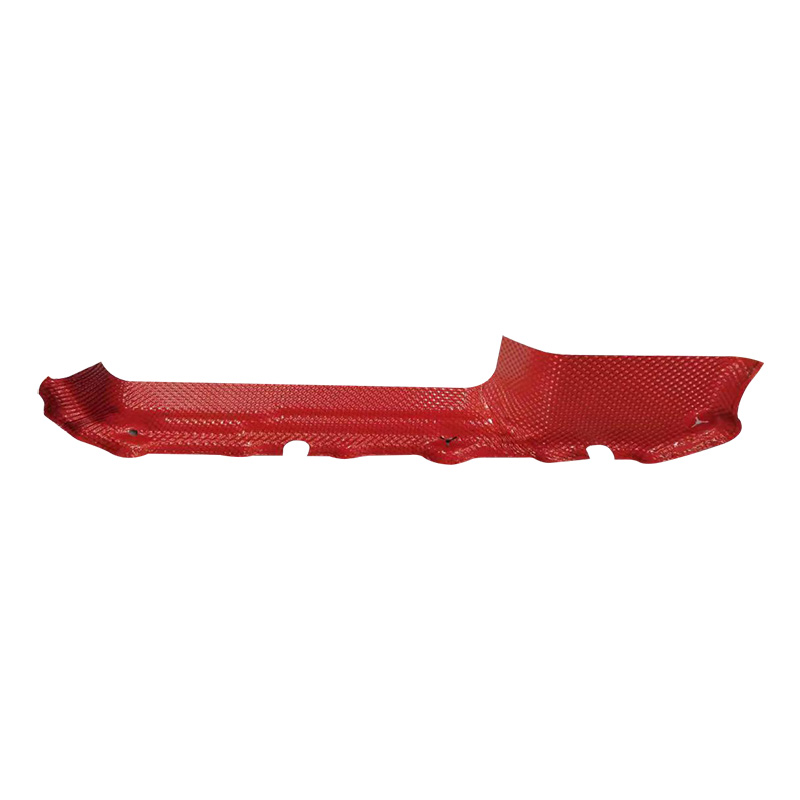
 English
English  Español
Español Português
Português русский
русский Français
Français 日本語
日本語 Deutsch
Deutsch tiếng Việt
tiếng Việt Italiano
Italiano Nederlands
Nederlands ภาษาไทย
ภาษาไทย Polski
Polski 한국어
한국어 Svenska
Svenska magyar
magyar Malay
Malay বাংলা ভাষার
বাংলা ভাষার Dansk
Dansk Suomi
Suomi हिन्दी
हिन्दी Pilipino
Pilipino Türkçe
Türkçe Gaeilge
Gaeilge العربية
العربية Indonesia
Indonesia Norsk
Norsk تمل
تمل český
český ελληνικά
ελληνικά український
український Javanese
Javanese فارسی
فارسی தமிழ்
தமிழ் తెలుగు
తెలుగు नेपाली
नेपाली Burmese
Burmese български
български ລາວ
ລາວ Latine
Latine Қазақша
Қазақша Euskal
Euskal Azərbaycan
Azərbaycan Slovenský jazyk
Slovenský jazyk Македонски
Македонски Lietuvos
Lietuvos Eesti Keel
Eesti Keel Română
Română Slovenski
Slovenski मराठी
मराठी Srpski језик
Srpski језик
Basic knowledge of the press tools
2021-10-27
1. Crimping(press tools)
Crimping is a stamping process that rolls the edge of a workpiece into a closed circle. The axis of the crimping circle is linear.
2. Curl edge(press tools)
Rolling edge is a stamping process that rolls the upper edge of the hollow part into a closed circle.
3. Drawing(press tools)
Drawing is a stamping process that changes the flat blank or process part into a curved surface. The curved surface is mainly formed by the extension of the material at the bottom of the punch.
4. Stretch bending(press tools)
Tension bending is a stamping process to realize bending deformation under the joint action of tension and bending moment and make the whole bending cross section subject to tensile stress.
5. Bulging(press tools)
Bulging is a stamping process in which hollow parts or tubular parts are expanded outward along the diameter. Sectioning is a stamping process that divides forming parts into several parts.
6. Leveling
Leveling is a stamping process to improve the flatness of local or overall planar parts.
7. Undulation forming
It is a stamping process that relies on the extension of materials to form local depressions or bulges. The change of material thickness in rolling forming is unintentional, that is, a small change of thickness is naturally formed in the deformation process, not the requirements specified in the design.
8. Bend
Bending is a stamping process that uses pressure to produce plastic deformation of materials, so as to be bent into a shape with a certain curvature and angle.
9. Chiseling
Chiseling is a blanking or punching process using a chiseling die with a sharp edge. There is no lower die for chiseling, only a flat plate is padded under the material, and most of the punched materials are non-metallic.
10. Deep hole blanking
Deep hole blanking is a punching process when the hole diameter is equal to or less than the thickness of the material to be punched.
11. Blanking
Blanking is a stamping process that separates materials along a closed contour. The separated materials become workpieces or process parts, most of which are planar.
12. Necking
Necking is a stamping process to compress the open part of hollow or tubular parts to reduce it.
13. Reshaping
Shaping is a stamping process that relies on material flow and changes the shape and size of parts in a small amount to ensure the accuracy of the workpiece.
14. Refurbishment
Trimming is a stamping process in which a small amount of material is cut along the contour or inner contour, so as to improve the edge finish and perpendicularity. The refurbishment process generally improves the dimensional accuracy at the same time.
15. Hole turning
Hole turning is a stamping process that turns the material into a side vertical flange around the inner hole.
16. Flanging
Flanging is a stamping process that turns the material into a short side along the contour curve.
17. Deep drawing
Deep drawing is a stamping process that changes flat blank or process parts into hollow parts, or further changes the shape and size of hollow parts. In deep drawing, the core part is mainly formed by the material outside the bottom of the punch flowing into the die.
18. Continuous drawing
Continuous drawing is a stamping method that uses the same die (continuous drawing die) to gradually form the required shape and size through multiple deep drawing on the strip (coil).
19. Thinning drawing
Thinning drawing is a drawing process that further changes the shape and size of hollow parts and intentionally thins the side wall.
20. Reverse drawing
Reverse drawing is a deep drawing process that turns out the inner wall of hollow parts.
21. Differential temperature drawing
Differential temperature deep drawing is a deep drawing process in which the temperature of the material to be deformed is much higher than that of the deformed part by means of heating and cooling, so as to improve the degree of deformation.
22. Hydraulic drawing
Hydraulic deep drawing is a deep drawing process that uses the liquid contained in the rigid or flexible container to replace the punch or concave die to form hollow parts.
23. Reinforcement pressing
Crimping is a stamping process that rolls the edge of a workpiece into a closed circle. The axis of the crimping circle is linear.
2. Curl edge(press tools)
Rolling edge is a stamping process that rolls the upper edge of the hollow part into a closed circle.
3. Drawing(press tools)
Drawing is a stamping process that changes the flat blank or process part into a curved surface. The curved surface is mainly formed by the extension of the material at the bottom of the punch.
4. Stretch bending(press tools)
Tension bending is a stamping process to realize bending deformation under the joint action of tension and bending moment and make the whole bending cross section subject to tensile stress.
5. Bulging(press tools)
Bulging is a stamping process in which hollow parts or tubular parts are expanded outward along the diameter. Sectioning is a stamping process that divides forming parts into several parts.
6. Leveling
Leveling is a stamping process to improve the flatness of local or overall planar parts.
7. Undulation forming
It is a stamping process that relies on the extension of materials to form local depressions or bulges. The change of material thickness in rolling forming is unintentional, that is, a small change of thickness is naturally formed in the deformation process, not the requirements specified in the design.
8. Bend
Bending is a stamping process that uses pressure to produce plastic deformation of materials, so as to be bent into a shape with a certain curvature and angle.
9. Chiseling
Chiseling is a blanking or punching process using a chiseling die with a sharp edge. There is no lower die for chiseling, only a flat plate is padded under the material, and most of the punched materials are non-metallic.
10. Deep hole blanking
Deep hole blanking is a punching process when the hole diameter is equal to or less than the thickness of the material to be punched.
11. Blanking
Blanking is a stamping process that separates materials along a closed contour. The separated materials become workpieces or process parts, most of which are planar.
12. Necking
Necking is a stamping process to compress the open part of hollow or tubular parts to reduce it.
13. Reshaping
Shaping is a stamping process that relies on material flow and changes the shape and size of parts in a small amount to ensure the accuracy of the workpiece.
14. Refurbishment
Trimming is a stamping process in which a small amount of material is cut along the contour or inner contour, so as to improve the edge finish and perpendicularity. The refurbishment process generally improves the dimensional accuracy at the same time.
15. Hole turning
Hole turning is a stamping process that turns the material into a side vertical flange around the inner hole.
16. Flanging
Flanging is a stamping process that turns the material into a short side along the contour curve.
17. Deep drawing
Deep drawing is a stamping process that changes flat blank or process parts into hollow parts, or further changes the shape and size of hollow parts. In deep drawing, the core part is mainly formed by the material outside the bottom of the punch flowing into the die.
18. Continuous drawing
Continuous drawing is a stamping method that uses the same die (continuous drawing die) to gradually form the required shape and size through multiple deep drawing on the strip (coil).
19. Thinning drawing
Thinning drawing is a drawing process that further changes the shape and size of hollow parts and intentionally thins the side wall.
20. Reverse drawing
Reverse drawing is a deep drawing process that turns out the inner wall of hollow parts.
21. Differential temperature drawing
Differential temperature deep drawing is a deep drawing process in which the temperature of the material to be deformed is much higher than that of the deformed part by means of heating and cooling, so as to improve the degree of deformation.
22. Hydraulic drawing
Hydraulic deep drawing is a deep drawing process that uses the liquid contained in the rigid or flexible container to replace the punch or concave die to form hollow parts.
23. Reinforcement pressing
Rib pressing is a kind of undulating forming. When local undulation occurs in the form of reinforcement, the corresponding undulation forming process is called reinforcement pressing

Previous:What are door hinges called?
We use cookies to offer you a better browsing experience, analyze site traffic and personalize content. By using this site, you agree to our use of cookies.
Privacy Policy


